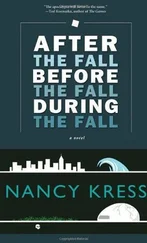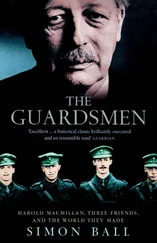Within an hour we are dizzy with Jane’s work, but we focus as best we can: sit on the table, lean over the books, read what we see aloud. The boy dive-bombs loudly around the older gentleman working on the far side of the room until the theologian demands he stop. There’s panic rising in us because Jane isn’t writing much down, because we suspect this stretch of days may be all we have, our last chance to see ourselves, our last chance to grasp the shape of who we have been before Jane gives up on N and on us, before she is forced to choose a new direction.
Jane runs her finger down a list of patients attended to by the Visiting Physician and those of us who think we can imagine a sickroom, who might know what it was like to lie in a narrow cot behind gauzy curtains, scan the list, chant the names to see if the saying changes us: “Amelia Sowerby, Annie Witt, Matthew Tippings, Frederick Vine.” Most of us ignore the columns of symptoms and diseases, though Cat whispers them quietly. “Cholera, cholera, seizure, cholera, influenza.”
In the afternoon, after Jane has taken Sam to the park and walked briskly along Moorgate’s high street to unknot her back, she opens the casebook records for 1877. When she’d come up from UCL to do her research on northern asylums she’d photocopied Leeson’s pages and a handful of others — of patients who were at the Whitmore around the time of the trio’s walk in the woods — but because she’d fallen behind in her dissertation, she hadn’t read the casebooks thoroughly.
It happens now that as Jane reads through some of the casebooks she hadn’t photocopied she feels as if she is re reading them, as if they are stories about people she has come to know and can imagine, as if the jottings and spare details are the transcript of a dream. Samuel Murray, 40 . Admitted: March 2, 1877 . Cause of insanity: Overwork. Marital strain . She comes to the casebook of a Mr. H.J. Morley and realizes with a start that this is Herschel’s. She either hadn’t noticed it as a student, or hadn’t thought to copy it, had relied instead on the hospital logbook, Thorpe’s case report and Leeson’s more voluminous stack of notes to frame the events of the day. Now, suddenly, here he is in inky blue calligraphy: Age: 32 . Admitted: May 17, 1877 . Occupation: Farmer . Status: Unknown . Degree of Education: Unknown . And then in a different hand, under the notes of admission: Refuses to work farm equipment or tend field. Complains of pains in limbs, exhibits swollen digits and capillaries on face. Was found on roof of neighbouring cottage; refused to be brought down. Consistently mislays or removes various items of clothes. Claims that his wife is an impostor. Lets crops foul when they are the sole means of income. Believes he is losing power of tongue .
The daily reports over the next three months are typically cryptic: agitated one day, compliant the next, morose, found naked by attendant in greenhouse, idle, behaviour improved, found picking at walls, refuses to speak, found with sewing scissors, found without shoes in garden, treated with cold bath, improving, wants to be read to, has difficulty sleeping, will not speak, gestures to throat repeatedly, admitted to hospital at B —, returned to W —, refuses meat, agitates fellow patients, broods .
On the 1st of August Herschel is improving , and then there is a gap of six days that corresponds with the start of his walk to Inglewood.
In Leeson’s casebook there were more notes than ever after his and Herschel’s return, as if Thorpe wrote down everything Leeson had to say about their adventure. But there is nothing in Herschel’s — just a quarter page of white space, as if he’d said nothing at all.
Despite her training, Jane is not an overly organized archivist. Gareth once said he couldn’t reconcile how good she was procedurally with the mess of her desk. “I have a system,” she’d scoffed, but she was lying — her system was more like a technique: tossing everything onto a table to see what overlapped, what connections might be made when the edges of two disparate pieces of paper met.
There is a photograph in a plastic sleeve next to the Whitmore’s Servant Engagement and Discharge Book that Jane, busy in other ledgers, has yet to study. It shows thirty-six members of the Whitmore staff in a semicircle on the hospital grounds: the male attendants in stark uniforms with polished buttons, the women’s staff in black dresses and white aprons. The Matron is at the centre of the circle in a striped dress with puffed sleeves that all but obscure the assistants on either side of her; the Superintendent sports a bushy moustache that had already gone out of fashion.
We know some of those faces, but not by name; we know, too, that these gatherings were rare, that the photo was taken in autumn because a number of the women wear shawls, that there would have been the fuggy smell of cigars weft into the Superintendent’s suit. We know that the men and women in the photograph were in some cases kind and in others insufferable. So we pause over the composed expressions of these figures, and wait for ambivalent or wishful feelings to flit over us. The man with the side-whiskers, we decide, is a bully; the woman in the plain apron must be the cook; this is a girl from the laundry, her stringy hair tied in a simple knot. We lean in to study a furtive-looking man in a bowler, and wonder suddenly if it’s Noble; we decide that the tall man with the clippers must be the gardener, sense that the dark-eyed woman with the chatelaine is a nurse. The seamstress is on the grass between them with a basket of needles and yarn resting beside her knee, as if she, along with everyone else, had been called out to the lawn in the middle of work.
Before Jane finishes at the records office, she asks the archivist with the dyed blonde hair for the index binder for the Farrington family so that she can see how much material she’ll have to sift through to find any record of the night George Farrington met Leeson and Herschel. The family archive, when it arrives, is more substantial than she expects, and for a moment, flipping through the long list of the index binder, her resolution wavers. She knows it will take her weeks to sort through the relevant categories — the legal records, estate accounts, letters and household notebooks — if she’s to do a proper job.
“Are there any diaries?” Jane asks when the archivist drops off the household ledgers she requested. “I thought Prudence Farrington kept one?”
The woman glances at the clock to gauge how close they are to closing, then says, “I think there’s a separate index for Mrs. Farrington, but let me double-check.”
The household account book for Inglewood that runs from mid 1876 to late 1877 is typical of its kind. There is a cramped signature across the top of the first yellowing page: Martha Stroud, housekeeper . This is followed by entries that reflect domestic commerce and concerns: twelve loaves of bread ordered from Hargraves, blankets aired, firewood delivered to the main house and cottages … There are inventories of kitchen pots, rotations for cleaning the silver plate, twenty-seven pages in which nothing unusual seems to have occurred. In September of 1877 there is a note about funerary costs but no mention of the person being buried, so Jane jots the date down so that she can compare it to the Farrington family death certificates when she looks at them tomorrow.
Before she packs up, she leafs through the large red book dedicated to household staffing. Every staff member has their own page with the individual’s position, pay rate, advances made and a note as to whether or not board was included. There are addendums at the bottom of each, detailing when people resigned or were let go, and these are mostly in the housekeeper’s writing: Mary Margaret Teems removed 26 July for pilfering flour, no reference given; Wilson Penfeld retired with a gift of five pounds .
Читать дальше












